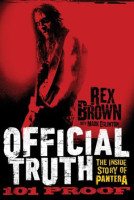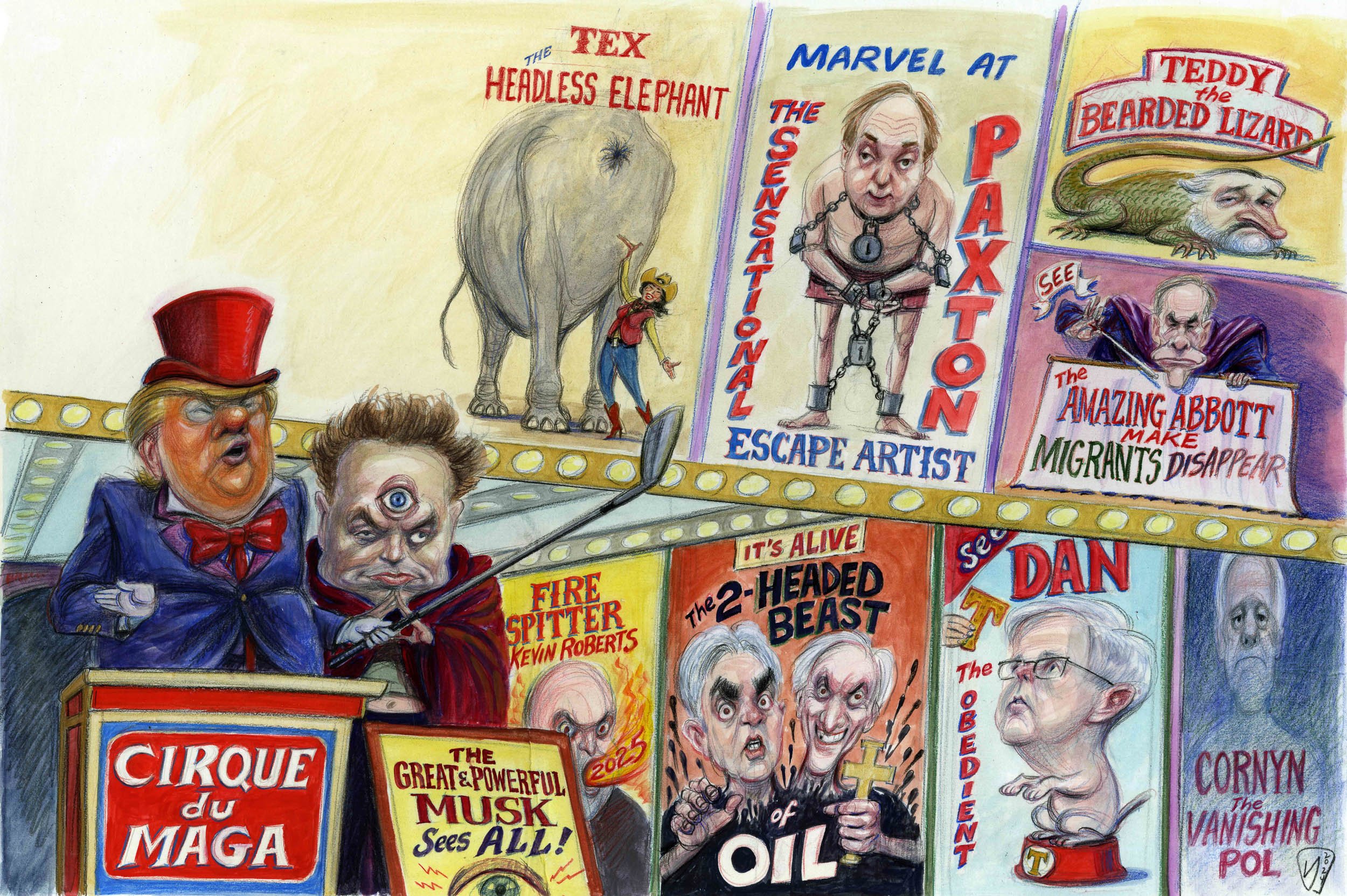Behind Their Music: Al Jourgensen and Rex Brown

by Al Jourgensen
De Capo Press
336 pages; $26.99
Conventional rock wisdom holds that the road to superstardom is paved with discarded schoolbooks, whiskey bottles and seven-digit hotel bills. The path then twists through addiction, bitterness and—finally—memoirs recounting the untold history. Before VH1’s “Behind The Music” docudramas arrived to warn against the “pitfalls of fame” (chemical dependency and suicidal recklessness, mostly), heavy-metal heroes of the ’80s and ’90s had to live the life to learn its lessons.
Two hard-rock icons recall that journey in recent books: Official Truth, 101 Proof by Rex Brown, bassist of the defunct Arlington metal band Pantera, and Ministry: The Lost Gospels According To Al Jourgensen, by the titular founder of industrial-rock pioneers Ministry.
Both men’s stories begin in ruptured though not broken homes. Brown was born in Graham, Texas in 1964, where his “Daddy Bill” had a job with Texas Electric. When Daddy Bill was diagnosed with cancer in 1971 and died early the next year, Rex found solace in rock and roll. “While listening to music in my bedroom one night, I remember hearing the most fucking amazing sound emerging from my radio … [t]he name of the song was “Tush” and the band was ZZ Top, and when I heard this song, it immediately altered my outlook on everything. I held onto that feeling for dear life.”

by Rex Brown
De Capo Press
304 pages; $26
A world away from Graham, Al Jourgensen was born in Havana, Cuba in 1958. “My mother was sixteen when she had me,” he writes, “and I have no idea who my father is but I know he didn’t stick around.” His mother married Ed Jourgensen when Al was six, and though the father/stepson relationship had pitfalls, they found a shared interest in watching sports, particularly hockey, “I loved the competitiveness, the action, the violence,” Al says of the game. And then came music. Jourgensen remembers a 1967 Rolling Stones performance on “The Ed Sullivan Show” as having “… this raw, primal energy I had never seen before, even in sports, and they were way more transgressive and dangerous than Elvis or the Beatles.”
As both books unfold, Brown and Jourgensen’s careers and lives dovetail in Texas again and again. Brown lives in Arlington between long stints on the road with Pantera, and Jourgensen spent time in Austin, Marble Falls, and elsewhere in Texas before finally settling in El Paso, where he still lives. And both Pantera and Ministry experienced growing pains in the 1980s before bronzing into metal museum pieces. Pantera started off glam when Brown hooked up with sibling co-founders “Dimebag” Darrell Abbott (guitar) and Vinnie Paul Abbott (drums) in high school, and in their early years the band performed in spandex and teased hair. Ministry also abused hairspray and eyeliner in the early ’80s, and Jourgensen adopted a faux British accent for his band’s debut, a major label synthpop album called With Sympathy.
With Pantera’s Cowboys From Hell (1990) and Ministry’s Psalm 69 (1992), each band not only solidified its signature sound, but found an audience as big as the noise they made. The money followed, and though it’s difficult to imagine in today’s frugal musical economy, mid-’90s major-label largess was enough to keep both Brown and Jourgensen awash in enough disposable income to finance not just impractical recording sessions and ballooning drug habits, but extracurriculars like thousand-dollar bar tabs at strip clubs. Fame also afforded these artists an abnormal freedom from consequence; Jourgensen recalls on more than one occasion working an entire deli tray’s worth of contents up his rectum for the sole purpose of disgusting his perceived foes. Such acts become so commonplace that by the fifth recounting of destroyed hotel rooms, intoxicant binges and sexploits, both books begin to read like joyless exercises in repetition, less the stories of a long party than those of slow suicides.
The eventual reveals—Brown is now sober; Jourgensen has kicked hard drugs and “only” drinks—present another complication. In recovery, addicts are urged to “stay in the solution,” avoiding rosy remembrances and the snare of relapse, but the tell-all book demands the opposite. It’s difficult to feel simultaneous empathy for the subject’s struggles with addiction and joy at their tales of excess. The debauchery feeds our appetite for destruction but the meal never satisfies—especially when we know in advance that the pleasure comes from an attempt to mute pain.
Another difficulty—at least in terms of generating readerly sympathy—is the cruelty in some of Brown and Jourgensen’s characterizations. Brown’s book begins with a series of complaints levied at former Pantera drummer Vinnie Paul Abbott, and he revisits this target over and over through the course of 250 pages. Similarly, Jourgensen, who worked with former Ministry bassist Paul Barker for 17 years, expresses nothing but bile for his former collaborator. But even unhappy marriages have bright moments, and the fact that we’re afforded not a single glimpse of better times creates a serious (and obviously intentional) vacuum.
Both books deliver rambling, entertaining and frequently disturbing anecdotes and exaltations that expand on their authors’ iconic mythos. But the gravity these stories might have had (and whatever lessons they could have imparted) are deflated by the very things that hard-living rock memoirs require by design: bile and bluster. Both Brown and Jourgensen should know that dynamics, not volume, matter most.


